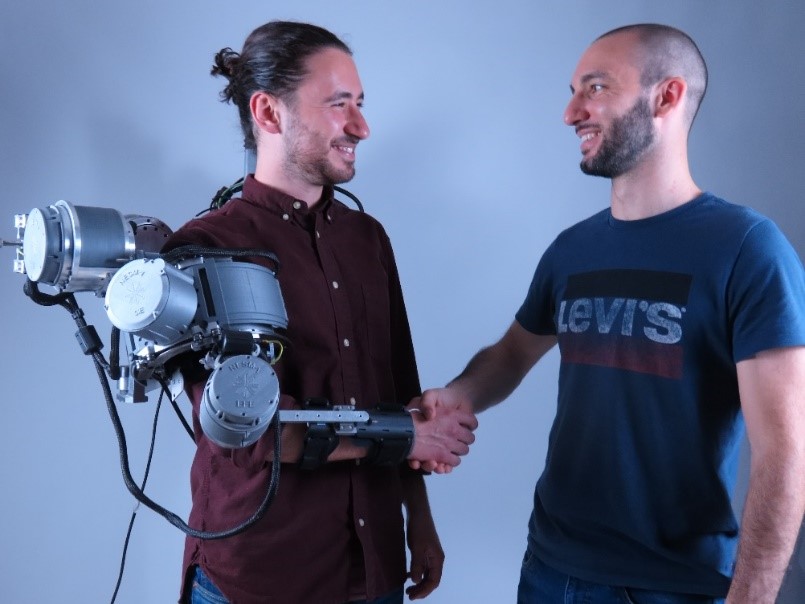24.06.2022. Designing a robotic exoskeleton for rehabilitating or assisting human motor functions is a big engineering challenge. Exoskeletons can support complex human movements by providing timely and precise assistive actions according to the user’s intention while preserving the natural movement biomechanics. A machine that works in perfect symbiosis with the human must have an ergonomic design resulting from a careful compromise between many system requirements, regarding weight, encumbrance, power consumption, actuation, and control.
With a long experience in the development of exoskeletons for rehabilitation and assistance following the principles of ergonomic design, the team of the Wearable Robotics Lab of Scuola Superiore Sant’Anna (SSSA) has now developed a novel powered exoskeleton for shoulder and elbow rehabilitation of post-stroke subject. The NESM-gamma exoskeleton is the result of a re-engineering process of a platform previously developed within the RONDA Project (funded by Tuscany Region, Italy), to address the need for rehabilitation of users with severe movement limitations in the ReHyb project. The design of the NESM allows to address independently each movement of the shoulder and elbow and can be adapted to be used either for the left or the right arm, thanks to a flipping mechanism in each robotic joint. The therapist can easily adjust the exoskeleton to fit the users’ arm, by means of an articulated chain that connects the exoskeleton to its support structure. The chain automatically compensates for any misalignment between the user’s and the robot’s joints, ensuring a comfortable human-robot interaction.

SSSA and the ReHyb partners will exploit the NESM-gamma to carry out personalized rehabilitation treatments in clinical settings, where patients can receive adaptive support for the functional mobilization of the upper limb. Engaging rehabilitation exercises will be implemented by combining the exoskeleton with other innovative technologies, including hand orthosis, functional electrical stimulation, and serious games.
A scientific paper will be published in a future issue of the IEEE Robotics and Automation Letters journal (title and abstract page are already available at this link), where the mechatronic design of the NESM-gamma is presented, along with a theoretical modelling of its actuation units and experimental verifications of the control performances with human subjects. Another piece to build the continuum-of-care rehabilitation offer of the ReHyb project is ready. Stay tuned for further updates!